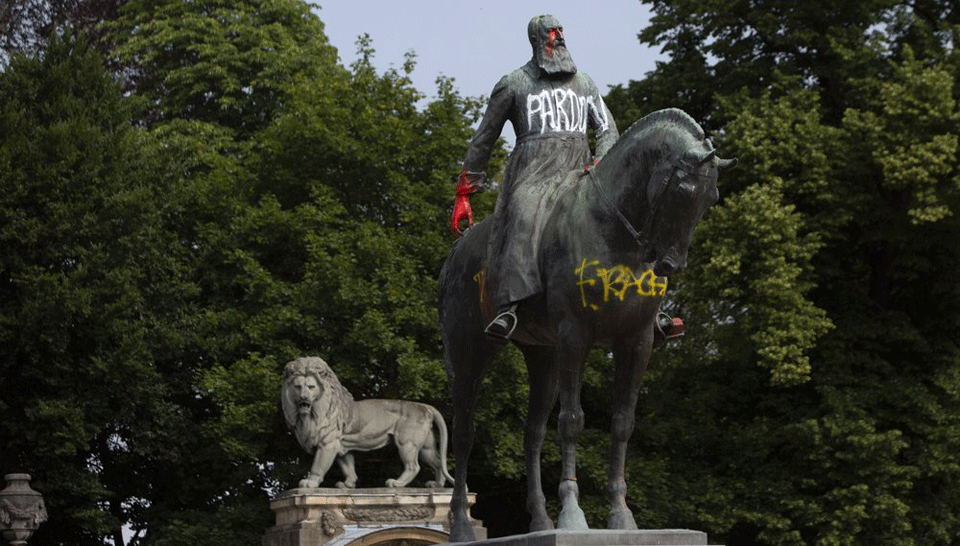
PARIS—The first week of European and particularly French and Francophone protests in the wake of the U.S. Black Lives Matter movement concerned parallel police actions against French minorities, including the death on his birthday of Adama Traoré, held down by three French cops in a hold similar to that executed on George Floyd.
Traoré was pronounced dead on arrival at the police station. The official verdict claimed that asphyxiation was caused by the presence in his blood of marijuana. But the family medical examiners reached the conclusion that he died as a result of the chokehold.
Last weekend protesters memorializing Traoré swarmed the streets, despite the COVID prohibition forbidding gatherings of more than ten people. In the wake of the protests, the Interior Minister announced the chokehold was now banned.
The protests were peaceful and most of the marchers wore masks and maintained physical distancing. One effect, though, was that they broke the embargo on street demonstrations which were in full force before the confinement, opposing President Macron’s underfunding of hospitals and his attempt to reduce worker pensions.
This week the protesters widened their approach and took aim at the legacy of European colonialism, most prominently by scrawling “I Can’t Breathe,” George Floyd’s last words, on the Belgian statue in Ghent of Leopold II, who presided over what amounted to a genocidal exploitation of the Congo, referred to in those imperialist times as the Belgian Congo.
Across the continent, memorials fell, including that in Great Britain at Bristol of the statue of Edward Colston, a slave merchant at the time when the British empire, masters of the sea, amassed a good deal of its wealth in the transport of slaves from Africa to the Americas.
In Bordeaux, the city removed plaques on David Gradis Street proudly proclaiming that between 1718 and 1789 Gradis’s company had powered 221 boats sent to the Americas carrying African slaves. Nantes, the center of embarkation of slave boats in France, was already ahead of this movement, having created a memorial to the cruelty of the slave trade that recounts its history. It’s an impressive monument, but so is the, at times, ostentatious compounded wealth of the city built on the slave trade, the legacy of which may outlast the memorial.
All of which brings up the question not just of memorials but of reparations, a question that has so far not been raised here.
Macron was quick to take advantage of the situation, having already proclaimed his African soft power policy of redressing colonialism by promising to restore some of the art the French looted from West Africa over the years. This art resides in prominent museums like the Louvre.

The French policy in Africa includes the carrot and the stick, however, because the French army is still in Mali, Mauritania, Burkina Faso, Niger, and Chad.
This tearful history was also recounted in Statues Also Die, Alain Resnais and Chris Marker’s 1950s film about the theft of this art and its repositioning as colonial booty in French museums. In the film the statues, wrenched out of their cultural context, appear to tear up, wither and die in the asphyxiation of colonialism.
The colonial tradition, though, endures. Laurent Joffrin, the editor of the supposedly left French paper Libération, which published Sartre’s salvos against French terrorism in Algeria, turned his back on that legacy in decrying the tearing down of colonial statues as partaking in the dangerous work of erasing history. Joffrin wished instead that the statues remain as markers of the colonial legacy. But most are not mere markers. They are celebrations.
Joffrin needn’t worry. France’s colonial history will unfortunately endure well beyond the statues. It is very deeply engrained. But this week a first salvo was fired across the bow against that legacy both in France and in other cities in Europe and across the globe.










